When I first saw the fortified castle at Edinburgh brooding over the city atop a hunk of volcanic rock I thought, "Hey! Those Scots really know how to build a fort!". Now I'm wondering if they hired the same consulting firm as the ancient Moors because the Alhambra has some striking similarities. It likewise sits atop a rocky promontory, dominating the Granada skyline. Both contain once opulent but still impressive royal palaces. Both were centers of military activity, execution, murder, romantic intrigue, history making ceremony, and religion. Both are heavily fortified to protect against invasion. And both are absolutely jaw-droppingly magnificent.
The Alhambra's name comes from the Arabic Al-Ḥamrā', which literally means "the red one". The complete form was Al-Qal'at al-Ḥamrā' or "the red fortress" from the color of the red clay of which it was constructed but the ancient Moorish poets called it "a pearl set in emeralds" because the whitewashed walls contrasted with the surrounding forest. From the outside all you see is a solid wall punctuated with watch towers and a few balconies. There is nothing to give you even a hint that there are lush gardens and lavish palaces within.
It was another hot Spanish summer day when we visited the Alhambra and I was struck by the way water was used to convey a sense of cool serenity in the midst of this baking "stony pile". Everywhere we went, water flowed silently in rills along the pathways, burbled cheerfully down stair-step channels, clapped joyfully in fountain jets, and waited serenely in shadowy reflecting pools. Everywhere there was water, carefully controlled.
At the center of the complex is the Palacios Nazaries, or Nasrid Palace, which is actually a series of palaces. Built from the late 13th century, the decoration of the palaces contains some of the best of Moorish and Andalusian art and architecture.
Intricate carved stonework, Islamic horseshoe arches, colorful tessellated tile mosaics and beautifully painted walls stop your breath at every turn.
Most of the palace buildings are quadrangular in structure and contain an open central courtyard. The interior walls facing the courtyards are decorated with columns, arcades, fountains or pools, intricate latticework, and flower beds. One such courtyard is the Patio de los Arrayanes (Court of the Myrtles). Another name is the Patio de la Alberca (Court of the Blessing or Court of the Pond), from the Arabic word birka, meaning "pool". At one end of the birka a single jet rises ruffling the surface of the water. The jet wasn't running the day we were there so the surface of the pool offered a still reflection of the surrounding architecture. Notice the latticework on the upper balcony. It is said that the King's harem could watch the goings on in the courtyard below while remaining modestly concealed.
The Hall of Comares, otherwise known as the Throne Room, is the largest room in the Tower of Comares. It was here in 1492 that Christopher Columbus waited on Their Royal Personages Ferdinand and Isabella, dazzling them with his PowerPoint presentations and colored pie charts to convince them that funding his voyage around the world was really a pretty good idea. And aren't we glad he did!
The domed ceiling in the Hall of Comares is an artistic and structural masterpiece of inlaid circles, crowns, and stars. A room fit for a King - or Queen - indeed.
Through the Hall of the Muqarnas is the Patio of Lions, famed for its fountain featuring 12 spouting lions. The fountain and courtyard is currently undergoing an extensive renovation which means I'll have to go back when it's complete!
The ceiling in the Hall of the Abencerrages will inspire awe and a sore neck, because all you want to do is stand there and stare up at it! The most notable feature is the eight-point stalactite star of the cupola that spreads out into eight trunk-like stalactites carved from stone. Sunlight streams through latticed windows to illuminate the intricate scroll work on the walls.
In the early 1800's our compatriot Washington Irving lived for a time as a guest of the palace. It was during this time that he enjoyed leisurely strolls through the grounds, midnight ramblings through deserted apartments, and long talks with his Spanish factotum, who regaled him with many a tall tale of the Alhambra and its inhabitants. It was in Mr. Irving's apartment that our own classmate met with a rabid pre-teen Spanish fan following who insisted on posing with him for a picture!
Every time we passed their group afterward, they would point and call his name, giggling! I've never seen a guy blush so easily!
Throughout the palace garden courtyards could be seen and heard from every window or balcony. Always there was the sound of water, always a shady glade offering a cool respite from the summer heat.
The Alhambra is one of those places so steeped in history that it positively drips from the rafters, and every room, every nook, every piece of carved and painted stone has a story behind it. If you have the immense fortune to go there, plan on two full days to see it all. And one night. I can't wait to go back again and spend more time investigating it. Having seen it the once, I can't even come close to doing it justice here so I'll leave you with some of the images that made me stop and give up ever finding the words to describe what I felt.
Yup. Those ancient folks sure knew how to build a fort!
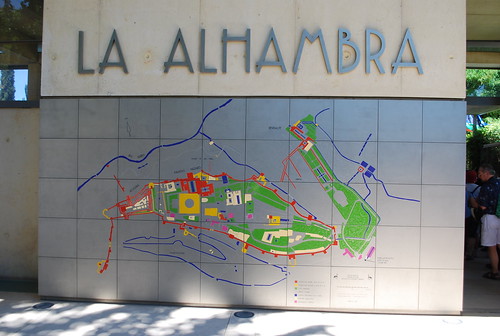

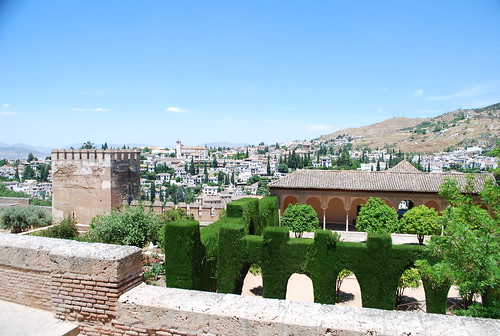
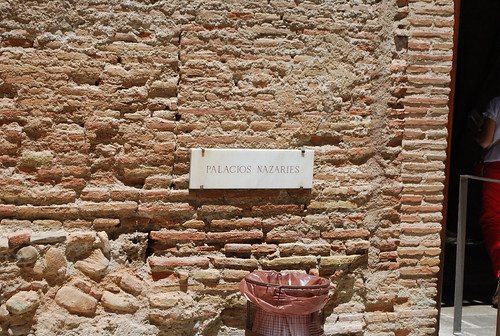
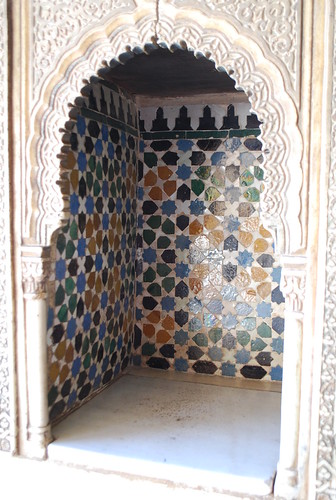
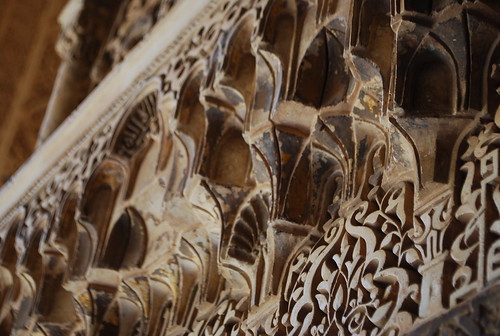

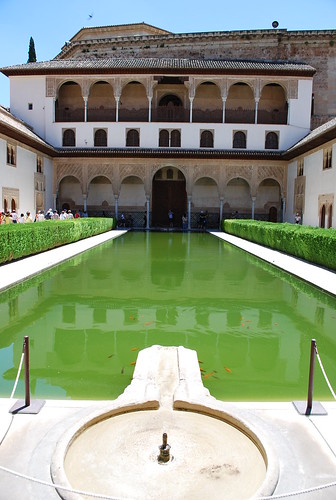

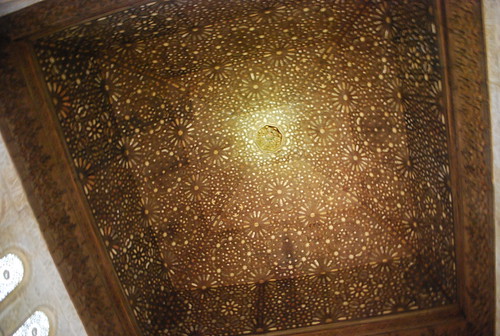


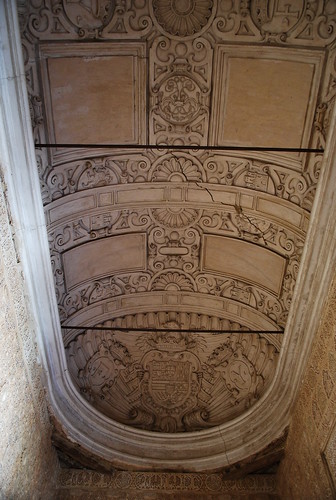
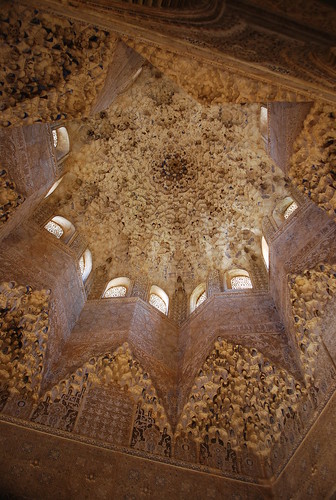
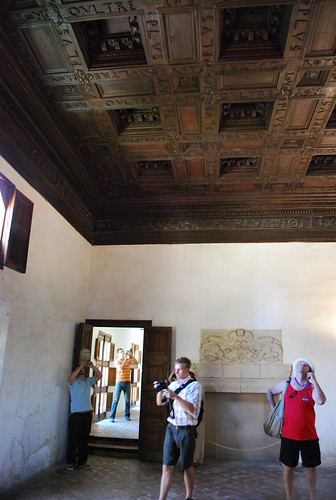
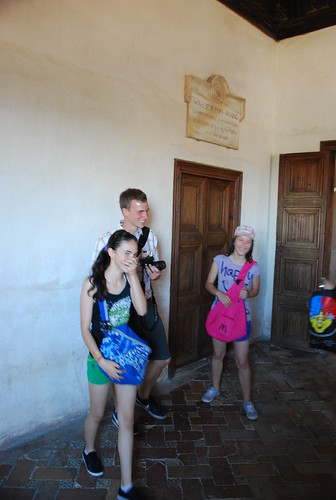
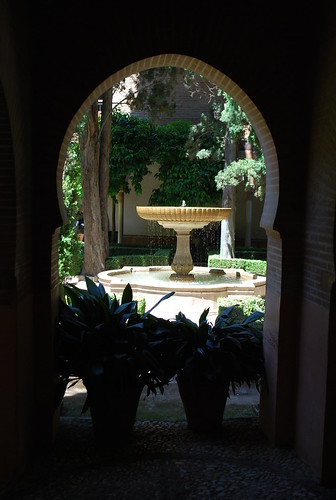
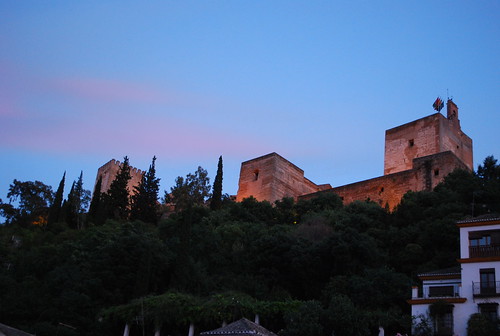
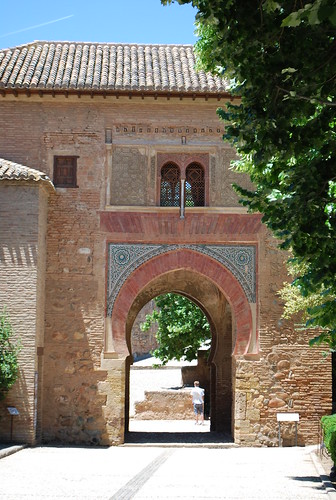

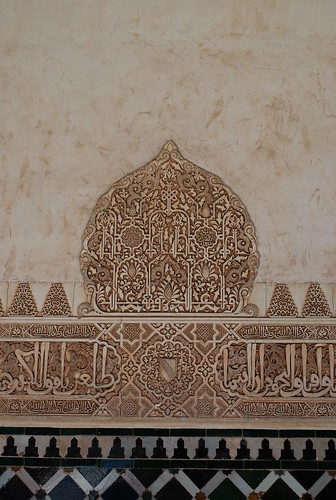

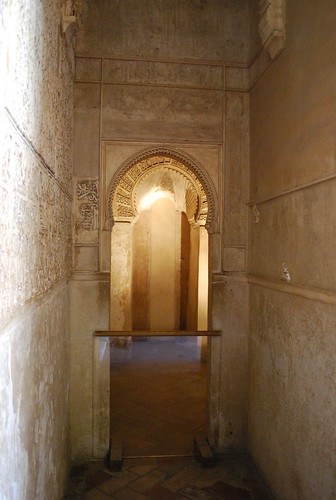
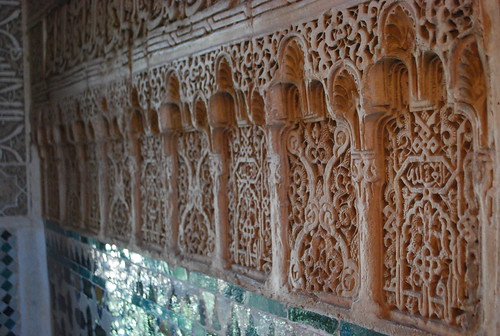
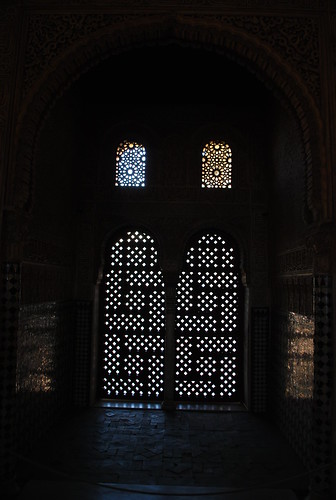
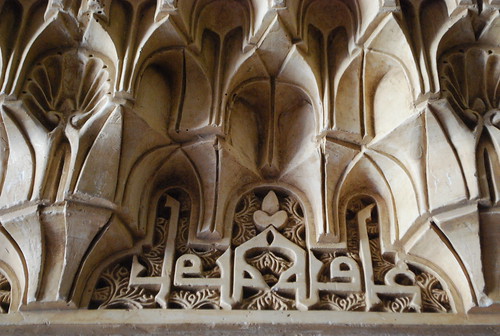

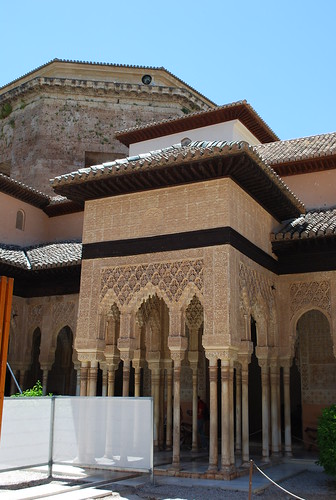
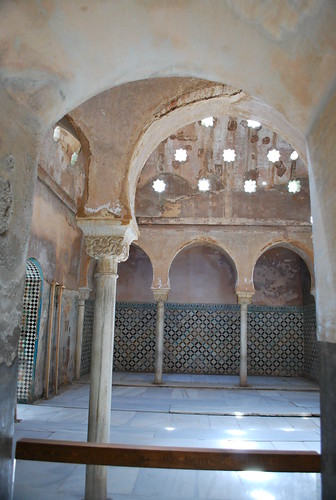
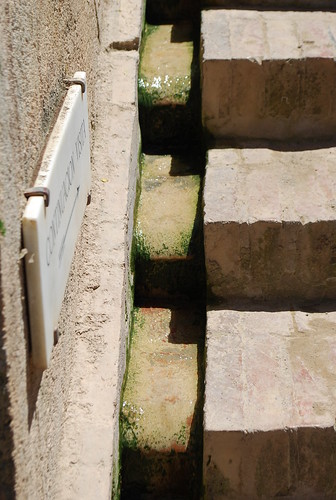

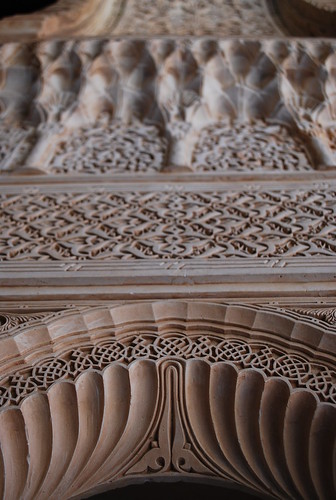




No comments:
Post a Comment